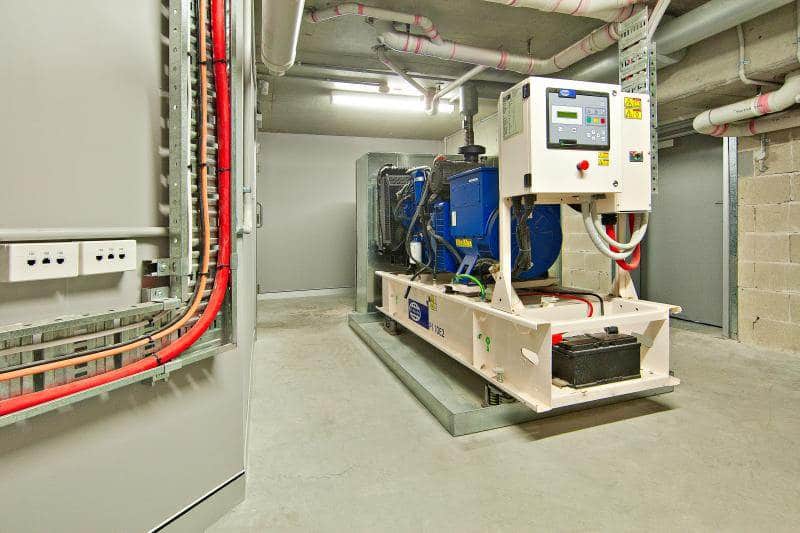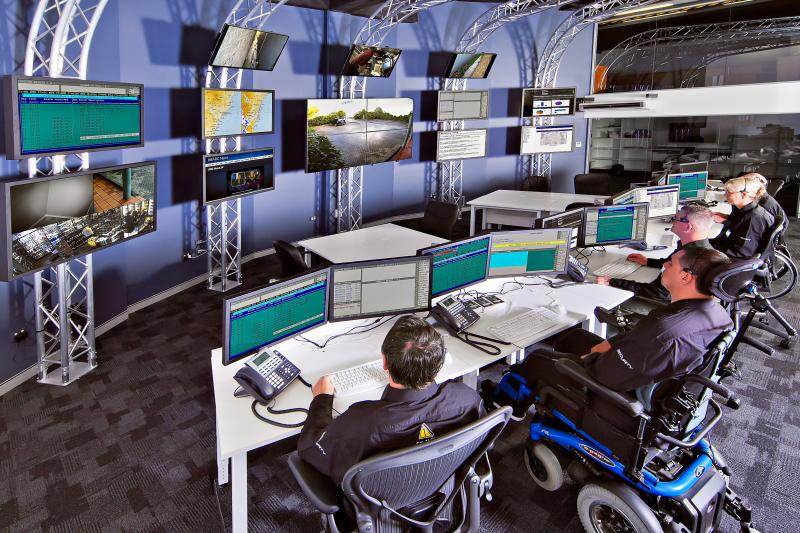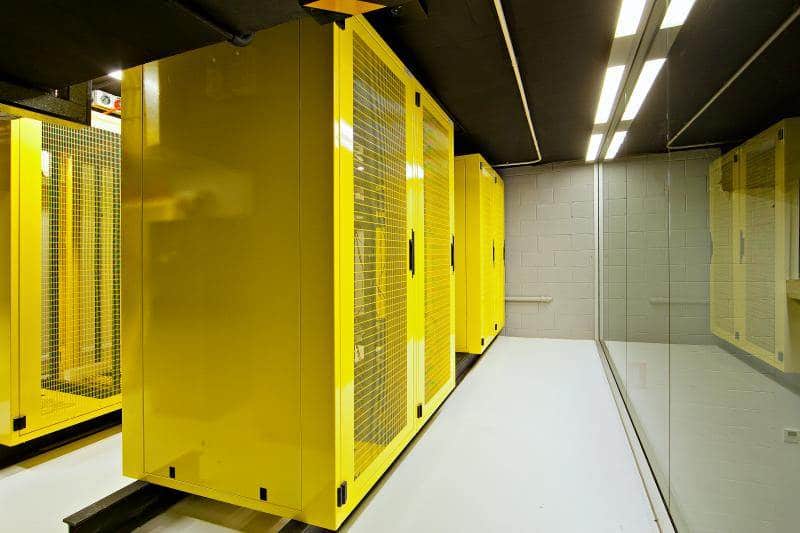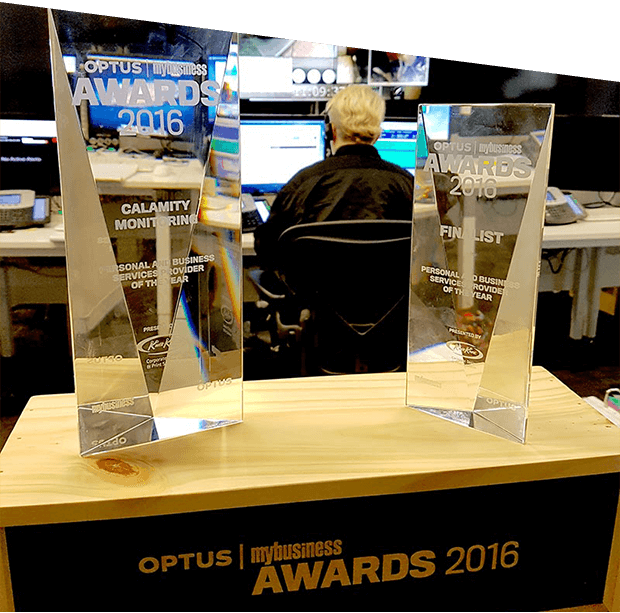The implementation of a security monitoring centre is one of the most challenging projects a security company can embark upon. Once launched, there is little chance for turning things off, changing things around or turning back without the risk of massive failures or expense. Many monitoring centres today are paying a heavy price for poor planning years ago, in choice of systems, physical capacity or architectural design and future-proofing.
Calamity decided to build The Centre for Advanced Security Technology and Leadership Excellence (CASTLE) from scratch after determining that a number of existing monitoring centres and companies for sale were not conducive to our clients’ requirements into the 21st Century. We were fortunate to learn plenty from others’ mistakes and our planning and ultimate build has resulted in what has been described as the most modern facility of its kind in the country. This article will explore some of the issues we identified and how these were managed.
Grading – Not a question of If, just of How.
We had decided to build and operate our facility according to AS2201.2 Monitoring Centres at the A-Grade, the highest possible level within the Standard for security monitoring centres. This qualifies us to monitor systems for clientele such as government and banks or embassies, but also to provide a high quality of service to smaller consumers, private residences and businesses.
Obviously the decision to build to A-Grade requires a massive financial investment in both capital expenses (building) and running costs (staffing levels). Lower grading levels require a substantially reduced outlay and in many cases are more than adequate, particularly for smaller operators who are unlikely to target major customers. Police in nearly every state have indicated they will only deal with certified monitoring providers, and with good reason. Regrettably there are still a number of security monitoring providers who are not certified and whilst they usually make all manner of excuses why,as far as we are concerned a monitoring centre which is not certified has no more business providing security services than an unlicenced and uninsured driver has operating a schoolbus.
The C3 grading for example, has relatively basic requirements which should be straightforward for any credible monitoring provider to achieve.
Calamity have invested heavily in complying with all applicable standards and would love to see an end to ‘back-to-bodgy’ monitoring companies whose customers are paying monthly all the while blissfully unaware of just how poorly they are being served.
Site Selection
Besides the obvious decisions in choosing a site (location, location, location) there were additional items of key importance. Some sites lend themselves well to construction of an A-Grade facility. In particular, industrial warehouses or factory-units inherently meet a number of requirements such as reinforced concrete construction, fire-rating and so forth, as well as permitting generators and 24hr use. However the neighbours in a typical industrial estate are beyond your control and might include smash repairers or factories whose operations are incompatible to your operation. We wanted exclusive control over our land and also didn’t want CEOs, Bank Managers and Government leaders tripping over busted up sedans and forklift pallets on their way into our facility. So we opted for a standalone building with an easily secured perimeter.
The next challenge was to find a site which had ample electrical power to support our carrier-grade data-centre, full accessibility to support employees with disabilities (of which we are a major employer) and a location which was not flood-prone. Our site, near Port Botany and Sydney Airport was lacking in data services so we hauled optic fibre to provide us with the bandwidth required into the future.
Design and Construction
The design stage was critical. As a multi-million dollar exercise, any mistake could be tremendously costly. For example the AS2201.2 Auditor determining that a supporting wall needed to move, or hydraulic services needed to be relocated. We had heard of ‘ghost’ monitoring centres which were built by companies who hadn’t done their homework and blew their budget on remedial works. Because there are only a handful of A-Grade monitoring centres in the country, there are not a lot of experienced designers or builders, so terms of reference and specifications had to be very closely defined and supervised.
Electric and Data Cabling
As with most cabling jobs, the early construction stage was the first and last chance to pull a number of cables. Any which were forgotten about would be virtually impossible to add later, once slabs were poured, penetrations were sealed and walls were lined with steel. Our wiring plan consisted of a mixture of fibre, CAT-6 for voice/data/CCTV and various other wiring for security, access control, building automation and signalling. As a general rule, whatever we pulled would have several spares. We may never use these but it was a small price to pay for future-proofing.
For security reasons, operator workstations did not have their own computer (or USB port access) and instead use a keyboard, video and mouse (KVM) extender to our restricted-access server room where the workstations or virtualised server/client systems are housed. So there was substantial horizontal cabling to the workstations beyond the usual ‘phone and PC’ connection to allow for multiple monitors, telephony devices and other command and control equipment.
Power redundancy was important and every adjacent workstation is on a different circuit. Should any circuit trip or fail, other workstations will be unaffected. Within the data center, redundancy was critical and each server or network device is powered via a pair (or more) of Power Distribution Units and circuits so that there is no single point of failure.
Although our site is not in a flood-prone area, to further safeguard against flooding from burst water mains or even tsunami projections, all our electrical connections and critical systems are raised well above ground-level.
More Power To You.
AS2201.2 requires a Standby power source such as an Uninterruptible Power Supply (UPS) and an alternate power source such as a Generator set. We implemented a 120kVA diesel three-phase generator with enough capacity to power our entire building (including lifts and air-conditioning), not just the monitoring centre. A 60kVA redundant UPS and battery bank keeps the monitoring centre running while the generator starts-up. We have enough battery capacity for several hours (the Standard requires 1 hour minimum) for those occasions when generators refuse to start or fail unexpectedly. Despite regular testing and maintenance, this does happen and the UPS provides contingency planning to allow you to implement ‘Plan B’. We have an alternate connection point on our main electrical switchboard which allows us to truck-in and plug-in a replacement generator quickly. Transfer switches and generator control functions are fully automatic and multiple distribution boards are located separately to clearly distinguish critical circuits from non-critical.
Ergonomics
Ergonomic considerations were paramount. Many A-Grade monitoring centres are windowless and quite often horrible places to work. Happy staff are good staff, so significant research was performed into lighting to improve efficiency, comfort and also minimise electricity consumption wherever possible. Lighting designs in breakout rooms are brighter with a different colour temperature in order to have a refreshing ‘wake-up’ effect for staff on a break, or needing to decompress after dealing with an incident.
CCTV screens displaying the perimeter were larger than necessary to not only support surveillance but to provide a nice outside view in lieu of windows. Screensavers on unused workstations display various nature scenes, rather than boring corporate images.
Noise control was important (too loud and a call-centre becomes unpleasant, too quiet and fatigue sets in). Ducted vacuum systems allow for a largely dust-free environment and also permit vacuuming without disturbing staff or callers. They also prevent a cleaner’s cranky old vacuum cleaner from tripping a protected circuit and threatening our operation.
Climate is controlled and fresh-air (filtered) is brought into the space and regularly replaced. Extraction fans in the toilets were massively over-specified to guarantee odour control and maximise comfort. We also provided showers for staff to encourage exercise in what can potentially be a very sedentary job.
Tremendous amounts of research went into the choice of coffee machine for our breakout room and we have been delighted to watch staff develop from cappuccino drinkers (two sugar) to discerning short black espresso drinkers. We are also the only monitoring station in the world with a rooftop garden and hot-tub. It’s the little things…

It still amazes us the number of people who have visited our security monitoring centre and said “Wow, it really does look like the photos on your website”. Unfortunately they are used to less than honest security companies simply lying about their service (see earlier article here.
Technology
The choice of ‘automation’ technology is one of the major decisions required. Some of the most common automation software packages in use by Australian monitoring companies haven’t had any significant upgrade or development in years. Customer Web interfaces are non-existent, integration with third-party systems such as video and telephony are impossible and customisation is out of the question. For an established monitoring centre, changing software is akin to changing aircraft mid-flight. Potentially possible but just as likely to end in disaster. As one overseas colleague joked, it would be easier, less painful and less expensive to replace your spouse than your software.
We travelled internationally to meet with software suppliers and their clients to get a real-world opinion as well as to test various scenarios for our clients’ ambition. In fact, we spent more on researching our software than most Australian companies spend on the software itself. A mistake they will pay for one day.
Our automation software is tightly integrated with our phone system and this allows us to track inbound as well as outbound calls in order to maintain service levels and provide a more customised service to our clients. It also allows for field technicians to place accounts on-test and perform other account control functions without needing to wait in a call queue or talk to an operator. This can also be done via laptop or tablet (iPad) but at the top of a ladder it’s sometimes easier to use the phone. These tools improve technician efficiency (and billability) but also free operators to deal with alarms rather than service issues. Customisation allows us to follow highly specific instructions for clients without relying on pages of ‘notes’ for an operator to decode. Automation flow-logic can determine who to contact based on an alarm zone, time of day or other event and the operator can rapidly respond and get it right rather than waste time attempting to interpret notes before ultimately getting it wrong as is often the case.
Video integration is also possible to dozens of different camera systems (and the list will grow) rather than limiting us to one or two camera types, all from a unified operator interface to minimise training requirements and margin of error. We don’t know what the future will bring but we know we can write ‘middleware’ to interface new technology to our platform. Our commitment to IP Monitoring is supported by our carrier-grade data centre and our communications links include a combination of Fibre and DSL links underground as well as a 150Mb microwave link on our roof in case any underground connections are damaged or cut.

Training
We made a strategic decision to hire predominantly from outside the security industry to avoid operators bringing ‘bad habits’ from other companies such as ignoring certain signals. A virtual environment was built to allow operators to train and learn in a ‘sandbox’ without exposing them to real customer data (and allowing them to train off-site for 6 months while the actual monitoring centre was still under construction).
As there is a shortage of professional development opportunities within the Australian electronic security marketplace, as well as our own training program we worked with the American based Central Station Alarm Association (CSAA) who have developed a number of training and professional development tools for monitoring operators.
In addition to our A-Grade certification by ASIAL, we are the first Australian monitoring centre to be ‘Five Diamond’ certified and encourage other quality providers to follow in our footsteps.


